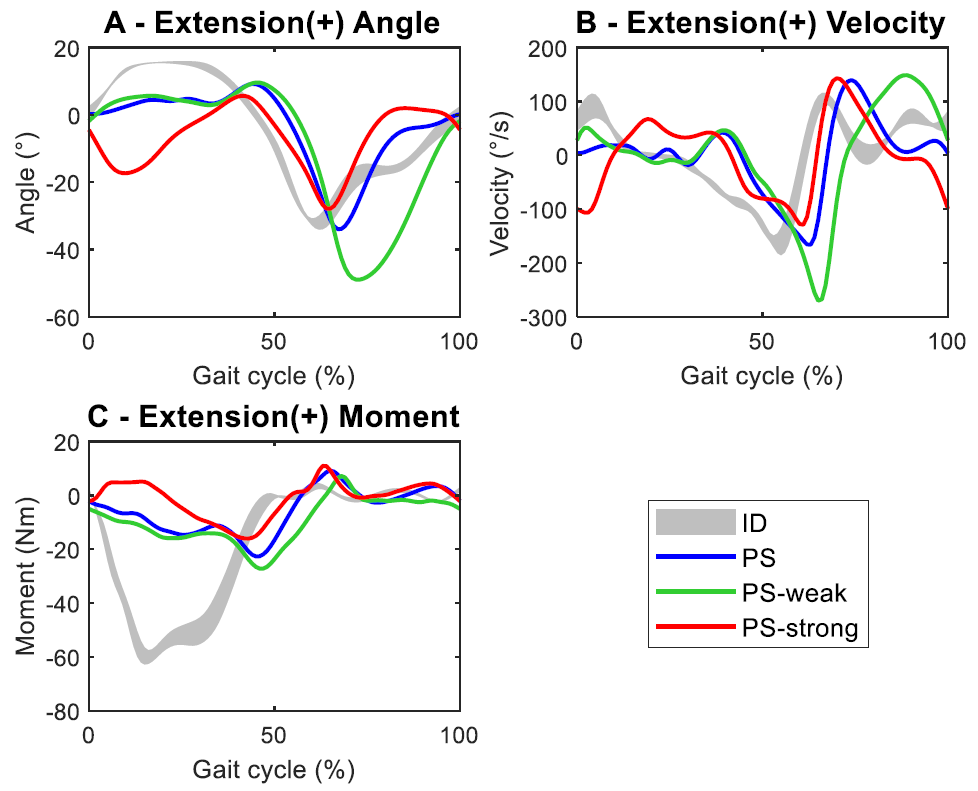Predicting the effects of knee extensor muscle weakening and strengthening on a post-stroke gait
| Gilmar F. Santos | Eike Jakubowitz | Nicolas Pronost | Thomas Bonis | Christof Hurschler |
| Department of Orthopedics, Hannover Medical School | Department of Orthopedics, Hannover Medical School | Université de Lyon, Université Lyon 1 | Université de Lyon, Université Lyon 1 | Department of Orthopedics, Hannover Medical School |
| Laboratory for Biomechanics and Biomaterials | Laboratory for Biomechanics and Biomaterials | LIRIS CNRS UMR5205 | LIRIS CNRS UMR5205 | Laboratory for Biomechanics and Biomaterials |

Abstract :
Stroke may cause different gait abnormalities, such as knee hyperextension and stiff-knee gait. This study used predictive simulation to investigate how the weakening and strengthening of the knee extensor muscles affect the gait pattern of a post-stoke patient. The prediction result showed impairments similar to those observed in the gait obtained by the inverse dynamics. While the predictive simulation of muscle weakening corrected the stiff-knee gait, the gait prediction of muscle strengthening decreased the knee hyperextension exhibited in the gait pattern of the patient.
Paper :
Paper presented at XXVIII Congress of the International Society of Biomechanics (ISB2021). Download the paper